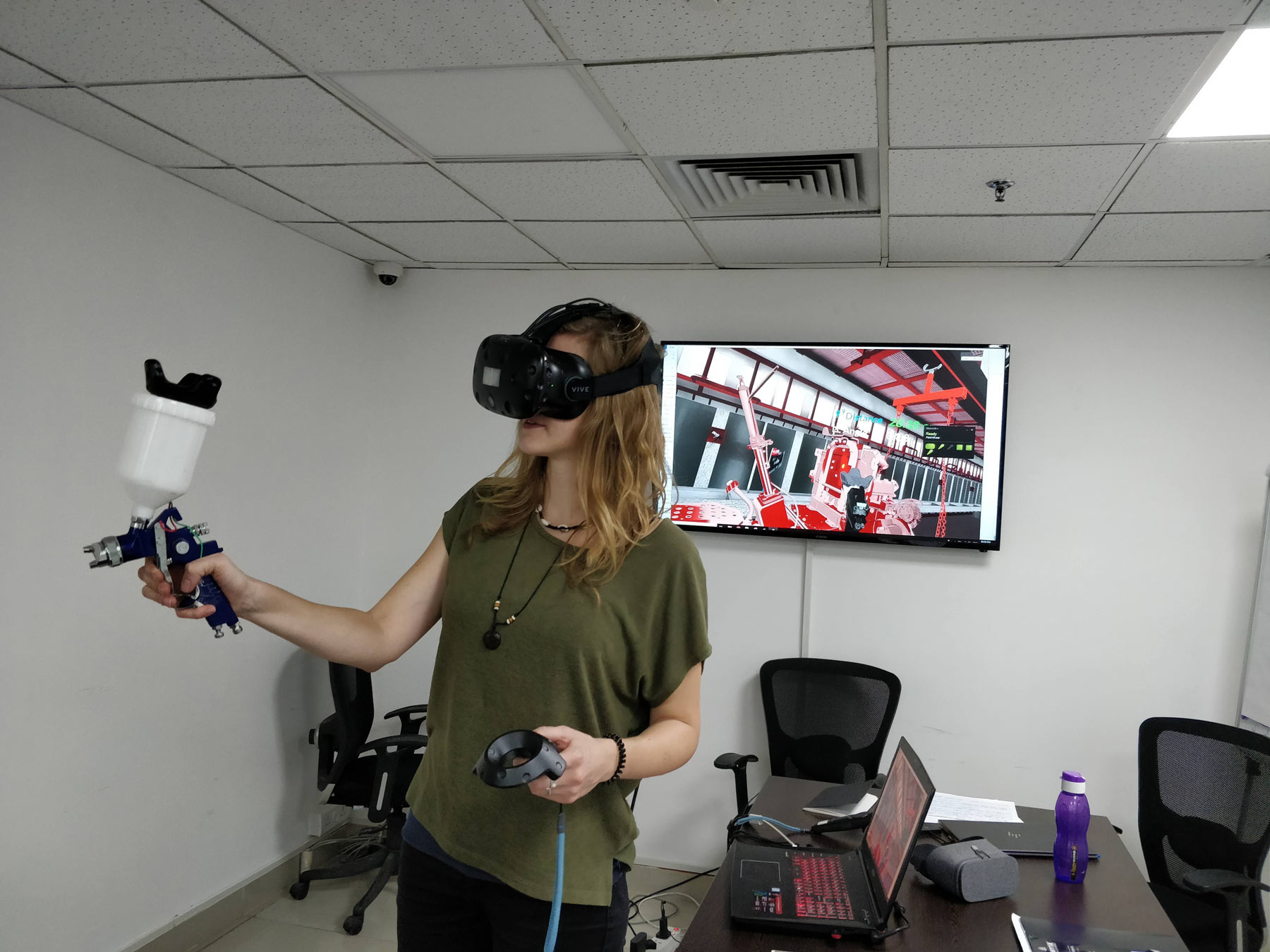VR and AR
Industrial training using VR and AR - a big impact opportunity
Virtual Reality (AR) and Augmented Reality (AR) have been around for more than 25 years now, but it still feels that they are in their nascent stages when it comes to their adoptability. There is no doubt that there is a lot of transition towards their deployment and there is an increase in their use by the industry, and it is shaping up pretty well. Why not? These technologies provide effective solutions in this industrial and digital era. The need to connect the digital and real world seems critical for organizations to enable them to foster and gain tremendous competitive advantage when the market is fierce and competitors are many.


AR and VR in Industries
Who would want to risk not deploying the novel technologies such as AR and VR which have the potential to bring tremendous benefits to all the stakeholders involved, providing a win-win situation? We wouldn’t want to, and we suppose you wouldn’t want to either. In the industrial arena, the transition towards VR and AR is just beginning to gain momentum, and with the technological advances AR and VR are poised to be the showrunners when it comes to effective training of the workforce with the influx of so many VR kits and AR applications. They even have applications in serving as advanced guidance, instruction and maintenance tools for the various industries. With complex processes in place in high consequence industries, thousands of small parts and equipment serve critical purposes, and even a minor error can cause tremendous downtimes and losses for the company. AR and VR together with planned IoT techniques in place can reduce the losses significantly, and even result in better uptimes, better quality product, and an even better customer experience for organizations using them in their sales and marketing strategies.
Industry needs change of training methodology
Proper training methodologies in various industry setups becomes of top priority, as it has direct impact on the plant and process operations, and in turn impact on profitability and sustainability of the businesses. We have already emphasised enough that traditional training methodologies are not effective and rather time consuming, and that retention levels are usually low, plus it is a costly affair, whereas AR and VR training reduces the costs significantly, increase the retention rates significantly, and there is a reduction in training time by more than 50% (still a conservative number).
70-20-10 Model – Realizing the importance of Experiential Learning
According to the 70-20-10 model in learning and development, 70% of the learning comes from experiential learning, or learning on the job, by performing various tasks and operations. 20% comes from social learning, through community learning, through networking experience and through coaching and mentoring. Astoundingly, only 10% of the learning is through formal means (the figures are based on a model, and not necessarily precise, rather a trend, just like the 80-20 rule).
This is where AR and VR training comes in handy, and it provides an experiential learning environment wherein the learners can immerse and engage in a virtual environment, and they can bridge the gap between the real and digital world seamlessly. Basically, AR is 25% virtual and 75% real, whereas VR is 75% virtual and 25% real.
With the AR and VR industry booming, there is no reason for organizations to hesitate in deploying these technologies in their training initiatives, and rather provides a competitive advantage when implemented the right way.
Watch out this video to help you correlate better.
With AR and VR training implementation and in-built analytics tools, we foresee a great impact when it comes to the effectiveness of the training delivery in the industry setup.
- Safety : It will help in reducing the number of safety incidents or violations by more than 25%. According to Ford, the introduction of VR in the manufacturing process resulted in an injury reduction rate of 70%.
- Operational Errors : It will help in reducing the number of errors by more than 90% post the AR-VR training delivery.
- Retention - Our research suggests that user retention will increase by as much as 80% with the introduction of AR-VR training methodologies if done the right way.
- Adaptability : One research showcases the gradual increase in the companies using the Virtual Reality Training methodology using gamification models as a top learning priority, which was 18% in 2016 and increased to 30% in 2017, This is true for ‘high consequence’ industries, in which the organizations face a high level of regulatory and compliance requirements.
- Training Time : It will help in reducing the training time by more than 50% with regular and efficient practice on the training modules ensuring significant cost-cuttings and human resource optimization. Over time, the figure could come up to more than 100% reductions, based on the technological adaptability which gradually increases over time.
As evident, there is massive scope for organizations to come out of their comfort zones, and explore new horizons in providing value to the workforce, the stakeholders, and to themselves, for obvious reasons, and benefits which AR-VR training brings to all the stakeholders, as mentioned earlier as well. AR-VR training methodology provides that opportunity, and now is the time for organizations to leverage technology to provide immersive and impactful training at reduced costs.
